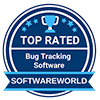Establishing a Data-Driven Evaluation Framework for B2B Products
Original
-
 ZenTao Content
ZenTao Content -
 2025-05-09 17:00:00
2025-05-09 17:00:00 -
 287
287
In the realm of B2B (Business-to-Business) products, traditional methods of assessing product value—often reliant on subjective feedback—are increasingly insufficient. Given the complexity of B2B environments, characterized by multiple stakeholders, intricate workflows, and extended decision-making processes, there is a pressing need for a systematic, data-driven evaluation framework.
Challenges in Traditional Evaluation Methods
B2B products typically involve diverse user roles, including end-users, managers, and executives, each with distinct perspectives and requirements. Consequently, relying solely on anecdotal feedback or subjective impressions can lead to ambiguous assessments of a product's effectiveness. For instance, a feature deemed beneficial by one user group may be perceived as redundant or even obstructive by another.
Moreover, the feedback loop in B2B settings is often prolonged. Implementing changes or new features may take considerable time to yield observable results, making it challenging to correlate specific product modifications with business outcomes. This delay hampers timely decision-making and iterative improvements.
The Imperative for a Data-Driven Evaluation Framework
To navigate these complexities, a structured approach to evaluating B2B products is essential. A data-driven framework offers several advantages:
- Objective Measurement: Quantitative metrics provide a factual basis for assessing product performance, reducing reliance on subjective opinions.
- Enhanced Transparency: Clear metrics facilitate better communication among stakeholders, ensuring that everyone has a shared understanding of product goals and performance.
- Informed Decision-Making: Data insights enable product teams to identify areas of improvement, prioritize features, and allocate resources effectively.
- Continuous Improvement: Regular monitoring of key performance indicators (KPIs) supports ongoing refinement of the product to better meet user needs and business objectives.
Designing an Effective Evaluation Framework
Developing a robust evaluation framework involves several critical steps:
1. Define Clear Objectives
Establishing what the product aims to achieve is foundational. Objectives should align with both user needs and business goals. For example, objectives may include reducing user onboarding time, increasing transaction efficiency, or enhancing data security.
2. Identify Relevant Metrics
Metrics should directly reflect the defined objectives. They can be categorized into:
- User-Centric Metrics: Measures such as user satisfaction scores, task completion rates, and user retention rates.
- Business-Centric Metrics: Indicators like return on investment (ROI), customer acquisition cost (CAC), and revenue growth.
- System Performance Metrics: Data on system uptime, response times, and error rates.
3. Establish Baselines and Targets
Determine current performance levels to establish baselines. Set realistic targets for each metric to gauge progress over time.
4. Implement Data Collection Mechanisms
Utilize tools and technologies to gather data efficiently. This may involve integrating analytics platforms, setting up user feedback channels, and employing monitoring software.
5. Analyze and Interpret Data
Regularly review collected data to identify trends, anomalies, and areas requiring attention. Use statistical methods and data visualization techniques to facilitate understanding.
6. Report Findings to Stakeholders
Prepare comprehensive reports that communicate insights clearly to all relevant parties. Tailor the presentation of data to suit the audience, ensuring that technical details are accessible to non-technical stakeholders.
7. Iterate Based on Insights
Use the insights gained to inform product development cycles. Adjust strategies, refine features, and reallocate resources as necessary to optimize product performance.
Addressing Potential Challenges
Implementing a data-driven framework may encounter obstacles:
- Data Silos: Disparate data sources can hinder comprehensive analysis. Solution: Integrate systems to enable centralized data access.
- Data Quality Issues: Inaccurate or incomplete data can lead to misleading conclusions. Solution: Establish data governance protocols to ensure data integrity.
- Resistance to Change: Stakeholders may be hesitant to adopt new evaluation methods. Solution: Demonstrate the benefits of data-driven decision-making through pilot programs and success stories.
Conclusion
In the complex landscape of B2B products, a data-driven evaluation framework is not merely beneficial—it is essential. By systematically measuring and analyzing product performance, organizations can make informed decisions, enhance user satisfaction, and achieve strategic business objectives. Embracing such a framework fosters a culture of continuous improvement and positions products for sustained success in competitive markets.
Support
- Book a Demo
- Tech Forum
- GitHub
- SourceForge
About Us
- Company
- Privacy Policy
- Term of Use
- Blogs
- Partners
Contact Us
- Leave a Message
- Email Us: [email protected]








